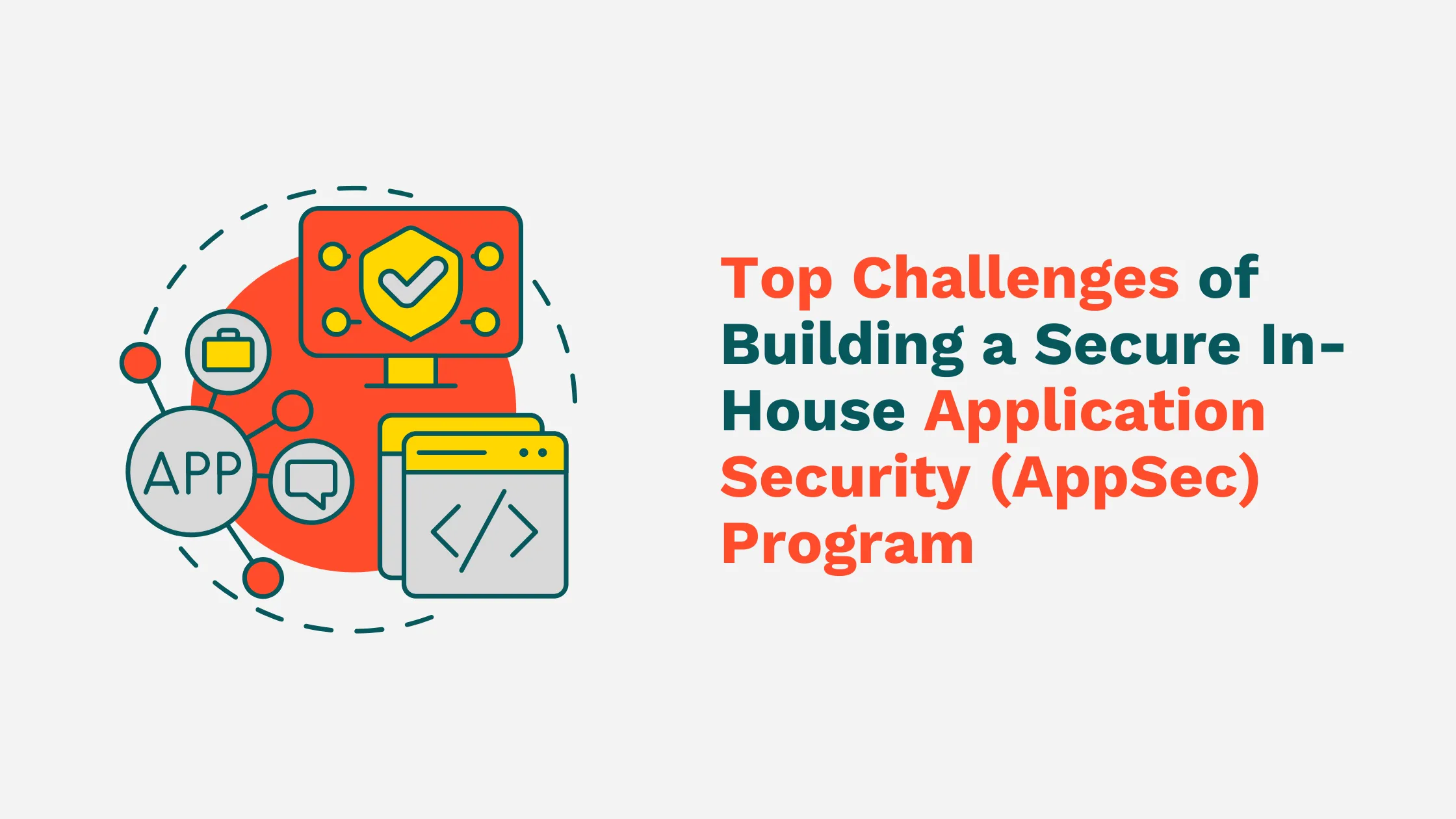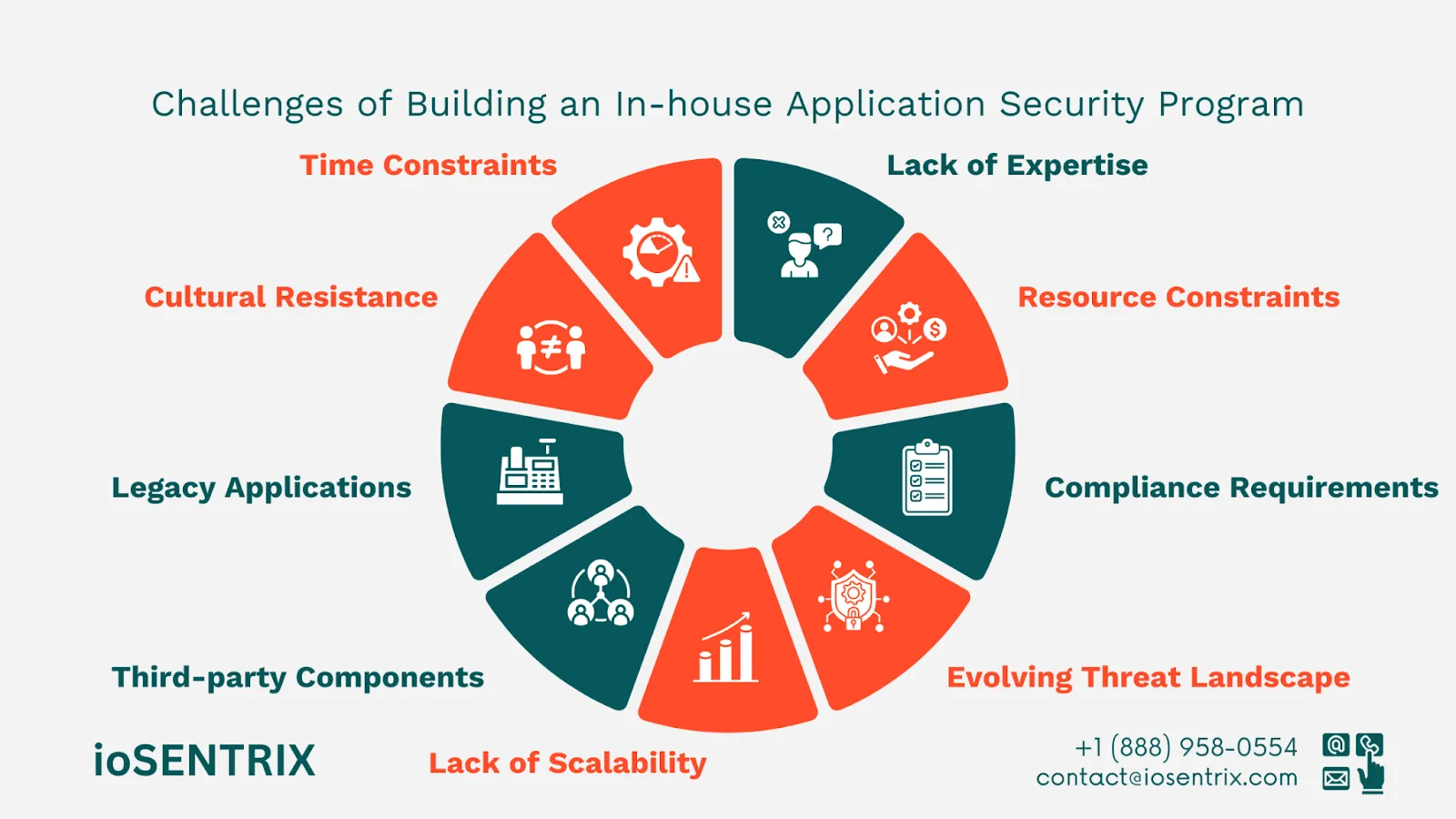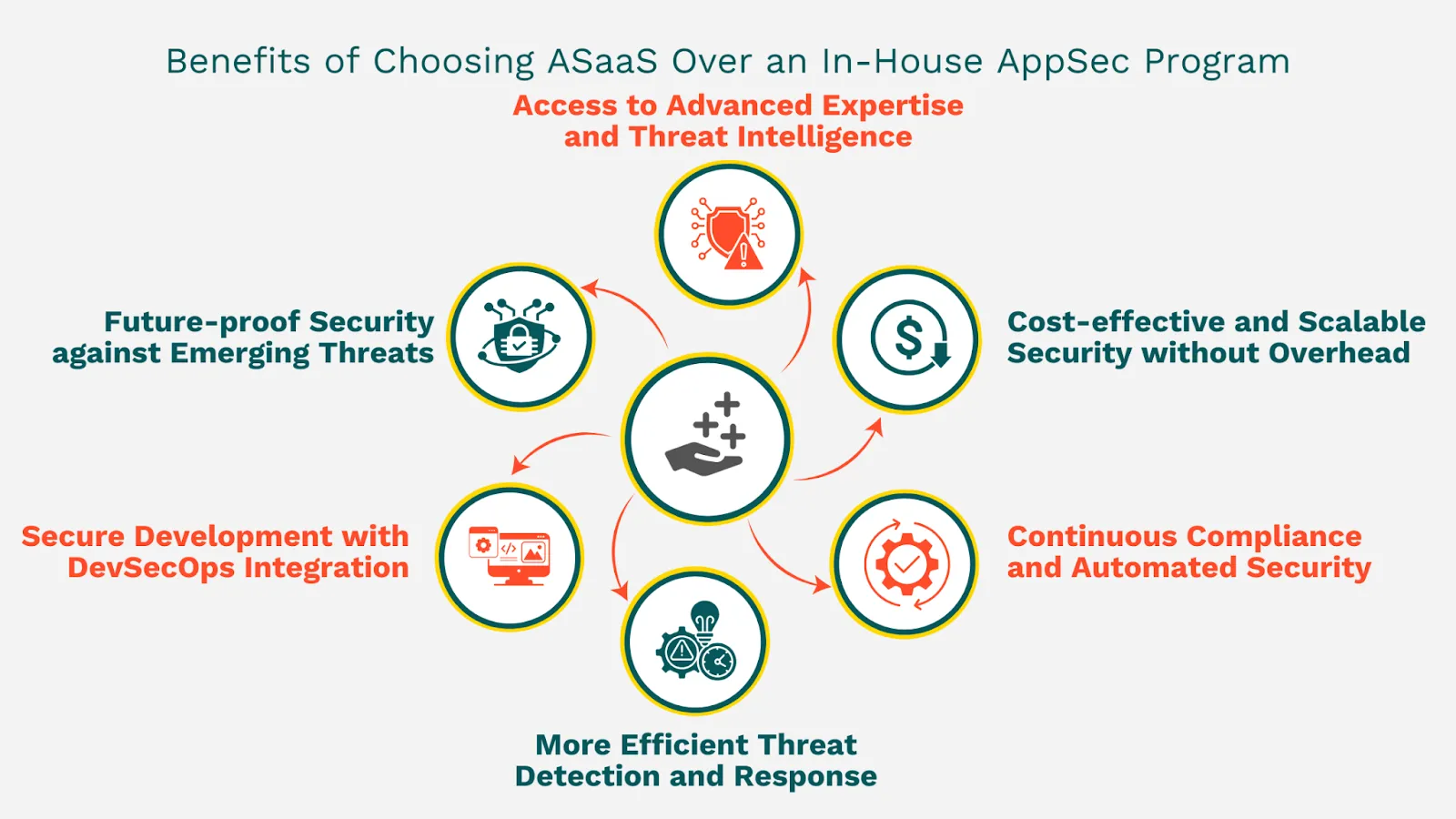
Creating an effective application security program can be challenging because it requires various skills. Organizations often face obstacles like limited resources, insufficient expertise, and resistance to change, which can hinder the full advantages of an internal AppSec program. To succeed, it is essential to collaborate with an industry expert who understands security principles, application architectures, and new threats.
This blog post discusses the common challenges that organizations encounter when developing an in-house AppSec program and outlines the measures that can be taken to address these issues.
Many companies often create in-house application security (AppSec) programs to control their software and intellectual property completely. This approach allows them to manage the development process closely and may help reduce costs.
With an in-house program, organizations can build a dedicated team that identifies and addresses security vulnerabilities in their applications. This reduces the risk of data leaks and security breaches and enables them to customize their security measures to fit their unique business requirements and industry standards.
Although many advantages and expectations are linked to creating an in-house AppSec program, successfully establishing one can be difficult and costly. These programs require significant resources, specialized knowledge, and ongoing investment.
Creating a successful application security program demands a solid understanding of security principles, application designs, and new threats. However, many organizations lack the necessary expertise to create and launch a complete program.
It is important to include security professionals with development experience, as this adds the credibility needed to implement and sustain an application security program effectively.
An application security program involves a considerable investment of resources, such as staff, training, tools, and infrastructure. Many organizations struggle to allocate the essential resources to develop and maintain an effective program. Additionally, as the program is being established, staff may come and go, which can lead to delays as new team members need to be hired and trained.
Ensuring an application security program complies with regulatory standards such as PCI DSS and HIPAA requires expertise in security controls, encryption standards, access management, and compliance auditing. Due to evolving regulatory landscapes, organizations often struggle to align security measures with compliance mandates.
Application security professionals have different expertise than compliance professionals, so organizations may need internal or external compliance experts to ensure they meet the necessary standards.
Cyber threats continuously evolve with the emergence of zero-day vulnerabilities, supply chain attacks, and sophisticated malware. Organizations must implement continuous threat intelligence monitoring, vulnerability management programs, and security training to stay ahead.
As companies expand and create new applications, their security needs will change. Developing an in-house program that can grow along with the organization's needs can be challenging, especially for businesses lacking the necessary skills and resources.

Organizations often need to launch applications quickly to fulfill business demands, which can reduce the time available for thorough security testing. Company leaders, the board, or investors may also exert added pressure to accelerate the time to market in order to stay competitive with other businesses.
When leadership does not support security, it can be challenging to get other teams to focus on security best practices. This is especially true for internal development teams, which often have their own goals and priorities and might be reluctant to integrate security into their processes.
Legacy applications may have been developed without security considerations, making it more complicated to protect them from potential threats.
Third-party libraries and dependencies often introduce security risks such as outdated components, known vulnerabilities (e.g., Log4j), and supply chain attacks. Organizations should implement Software Composition Analysis (SCA) tools to detect and remediate such risks.
Building an in-house Application Security (AppSec) program is a resource-intensive task that requires specialized expertise, advanced security tools, continuous compliance monitoring, and the ability to scale with evolving threats.
Many organizations struggle with these challenges. AppSec as a Service (ASaaS) provides a cost-effective, scalable, and expertise-driven alternative to overcome these challenges efficiently.
In-house security teams often lack the latest cybersecurity skills and real-time threat intelligence. With ASaaS, organizations gain access to certified security experts, ethical hackers, and security analysts who specialize in vulnerability management, threat hunting, and compliance audits.
Providers like ioSENTRIX deliver up-to-date security insights and real-time risk analysis for stronger application security.
An in-house AppSec program requires hiring security engineers, purchasing expensive tools, and continuously training teams, which makes it costly and resource-draining. ASaaS eliminates these overheads by offering on-demand security services.
It allows companies to scale security efforts without investing in full-time staff. ASaaS adapts to business needs without excessive costs, whether a startup or an enterprise.
Regulatory compliance with PCI DSS, HIPAA, GDPR, and ISO 27001 demands constant monitoring and audits. ASaaS providers integrate automated compliance tools, policy enforcement, vulnerability assessments, and regulatory reporting.
ASaaS providers enhance security by integrating automated scanning, continuous monitoring (SIEM), and proactive incident response to detect and mitigate threats faster than many traditional in-house programs, which may lack 24/7 coverage or specialized expertise.

ASaaS platforms integrate directly into CI/CD pipelines and offer real-time code analysis, automated security testing, and secure coding recommendations. Tools GitHub Advanced Security streamlines vulnerability remediation without slowing down development.
Cyber threats such as zero-day exploits (e.g., Log4j), software supply chain attacks (e.g., SolarWinds breach), and API security risks continue to evolve. ASaaS providers leverage real-time threat intelligence, AI-driven risk assessment, and automated patching to defend against these emerging risks proactively.
Regarding application security, companies must decide whether to create their program internally or seek help from an external expert. Both approaches are viable, but building an in-house program can be difficult.
Two key challenges make it hard: the expense of finding and training skilled staff and the need to continually update systems and technology. To manage security internally, a company needs a strong grasp of many complex rules, standards, and detection methods, which can be hard for all but the biggest companies to achieve.
Fortunately, several application security services are available that can help detect and lower application security risks without the need to develop these skills internally.
Companies can benefit from partnering with external experts, like ioSENTRIX, with the latest methods and tools for detecting and preventing security threats. By working with us, companies can address security issues before they happen and ensure their applications are secure without investing in extensive in-house development and maintenance.
The OWASP Top 10 identifies the most critical security risks for applications. One major risk is broken access control, which occurs when restrictions for authenticated users are not properly enforced. Another significant risk is Cryptographic Failures, which involve weak or misconfigured encryption that can expose sensitive data.
Application Security, or AppSec, helps protect software applications from potential weaknesses that hackers could use to gain unauthorized access to confidential data, disrupt business operations, or damage customer trust.
One issue is the lack of specialized knowledge, which can result in errors or overlooked opportunities. Another challenge is the difficulty in scaling to meet the growing needs of the business. Additionally, there is a risk of security weaknesses, which can put sensitive data at risk of being compromised.
In-house software refers to computer programs designed for use within a specific organization. This software can be created by the organization, developed by external parties, or purchased from vendors. Depending on its own decision, the organization that produces this software can make it available for commercial use in the future.
In-house development involves building the software within the organization, resulting in higher initial costs for salaries, benefits, and infrastructure. However, this approach can lower ongoing costs for maintaining and updating the software.
On the other hand, outsourcing the development work to external parties can provide a lower upfront investment. Costs can be adjusted according to the project's needs, but they may increase if the project scope expands over time.
Lorem ipsum dolor sit amet, consectetur adipiscing elit, sed do eiusmod tempor incididunt ut labore et dolore magna aliqua. Ut enim ad minim veniam, quis nostrud exercitation ullamco laboris nisi ut aliquip ex ea commodo consequat. Duis aute irure dolor in reprehenderit in voluptate velit esse cillum dolore eu fugiat nulla pariatur.
Block quote
Ordered list
Unordered list
Bold text
Emphasis
Superscript
Subscript